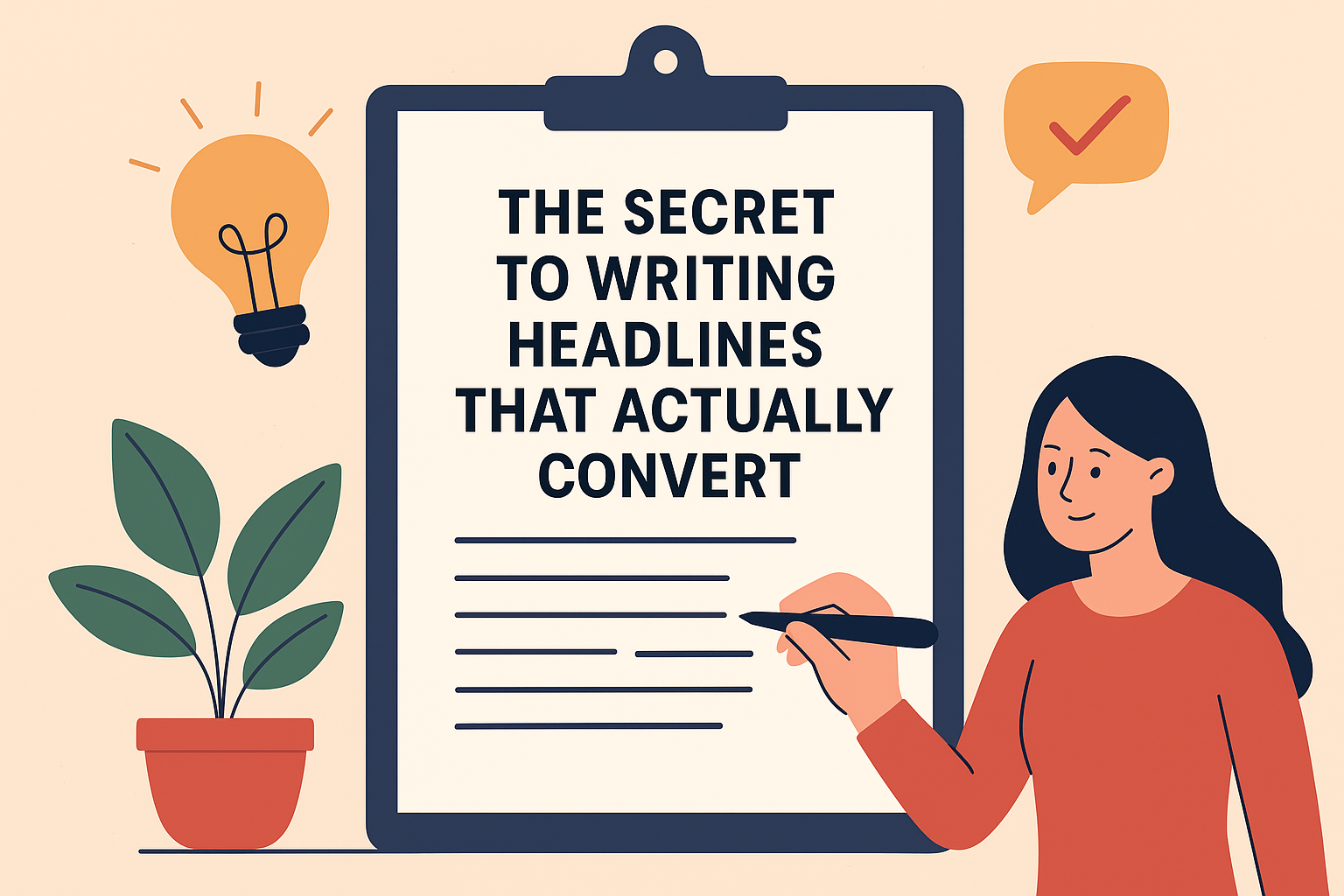 The Secret to Writing Headlines That Actually Convert
The Secret to Writing Headlines That Actually Convert
Introduction
A headline is the very first impression your content makes. Whether it’s a blog post, social media update, or ad copy, your headline determines if a reader will click or scroll past. In the fast-paced digital world, attention is currency, and headlines are the gateway to capturing it. Crafting a headline that not only grabs attention but also persuades readers to take action is an art and a science. This blog reveals the secrets behind writing headlines that truly convert.
Why Headlines Matter in Marketing
A headline is not just a title; it’s a promise. It sets expectations for what follows and influences the reader’s decision to engage.
1. First Impressions Count
In just a few seconds, readers judge whether your content is worth their time. A headline that sparks curiosity, emotion, or urgency can make all the difference.
2. Headlines Drive Click-Through Rates (CTR)
No matter how valuable your content is, if the headline fails to attract clicks, the effort is wasted. Strong headlines directly impact traffic, conversions, and engagement.
3. Search Engine Optimization (SEO)
Well-structured headlines with targeted keywords improve visibility in search engines. This increases organic traffic, which often leads to better conversions.
Elements of a High-Converting Headline
Crafting a headline that converts requires a balance of creativity, psychology, and strategy.
1. Clarity Over Cleverness
Readers prefer clear and direct headlines over vague or overly clever ones. A good headline tells them exactly what they’ll gain.
Example: Instead of “Unlock the Secret to Better Marketing,” say “10 Proven Marketing Strategies to Boost Sales Fast.”
2. Emotional Triggers
Emotion drives decision-making. Headlines that tap into curiosity, fear of missing out (FOMO), or excitement tend to perform better.
Example: “Stop Making These 5 Costly Marketing Mistakes Before It’s Too Late.”
3. Use of Numbers and Data
Numbers create a sense of structure and promise a clear takeaway. They also stand out in a sea of text.
Example: “7 Simple Steps to Double Your Email Open Rates.”
4. Power Words
Certain words spark immediate interest—such as proven, guaranteed, ultimate, secret, powerful, simple, quick. Incorporating these makes headlines more compelling.
5. Audience Relevance
The most important factor is knowing your audience. A headline should address their pain points, needs, and desires.
Proven Formulas for Crafting Headlines
There are timeless formulas that marketers use because they consistently work.
1. The List Headline
People love lists because they’re easy to digest.
“10 Marketing Hacks Every Business Owner Must Know.”
2. The How-To Headline
Shows readers they’ll learn something practical.
“How to Create Social Media Ads That Actually Convert.”
3. The Question Headline
Engages curiosity and makes readers want the answer.
“Are You Making These Common SEO Mistakes?”
4. The Urgency Headline
Encourages immediate action.
“Register Today: Only 3 Spots Left for Our Free Marketing Webinar.”
5. The Benefit-Driven Headline
Focuses on what the reader gains.
“Boost Your Sales by 50% with These Email Marketing Secrets.”
Common Mistakes to Avoid
Even seasoned marketers sometimes make errors in headline writing. Avoiding these mistakes can instantly improve conversions.
1. Being Too Generic
“Tips for Better Marketing” is too vague. Be specific instead.
2. Overpromising
If your content doesn’t deliver on the headline, readers lose trust.
3. Ignoring SEO
A creative headline is good, but without relevant keywords, it won’t reach your audience.
4. Making It Too Long
Headlines should generally stay under 65 characters for SEO and readability.
Tools to Improve Your Headlines
Several tools can help refine and test your headlines before publishing:
CoSchedule Headline Analyzer – scores your headline based on structure, grammar, and readability.
Sharethrough Headline Analyzer – provides insights into engagement potential.
Google Trends – helps identify popular search terms to include.
Tips for Testing and Optimizing Headlines
Headlines are not one-size-fits-all. Testing ensures you find the best-performing version.
1. A/B Testing
Create multiple variations of a headline and test which performs best in ads, emails, or landing pages.
2. Monitor Analytics
Track metrics like click-through rates, bounce rates, and time on page to evaluate effectiveness.
3. Learn from Competitors
Study successful competitors’ headlines to identify patterns and adapt them for your audience.
Conclusion
The secret to writing headlines that convert lies in understanding your audience, using proven formulas, and balancing clarity with creativity. Great headlines promise value, trigger emotion, and inspire action. By avoiding common mistakes, leveraging the right tools, and consistently testing, you can transform your headlines from attention-grabbers into powerful conversion drivers.
Remember: a headline is not just the first line of your content—it’s the key to unlocking your reader’s attention and guiding them toward action.